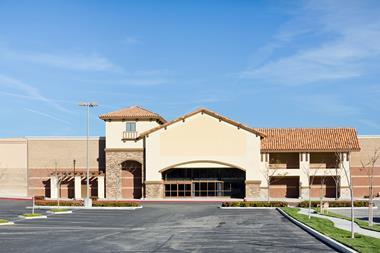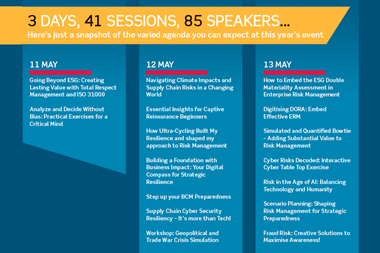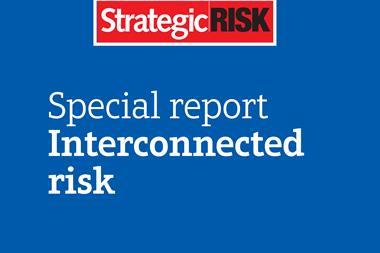Businesses need actionable insights and innovative tools to more quickly address megatrends and protect against critical risk and people issues
72 percent of business decision-makers feel their businesses aren’t moving fast enough to address risks associated with global megatrends across Trade, Technology, Weather and Workforce.
An Aon survey, which gathered insights from C-suite and business executives in North America, UK and Europe, found that 86 percent believe it is important to address the challenges and opportunities presented by these megatrends.

However, it is getting harder to make the right decisions amid their growing complexity and volatility.
“These findings confirm what we’re hearing from our clients every day – the world is more volatile and complex, creating uncertainty and need for new solutions across our global economy,” said Aon CEO Greg Case.
“Business decision makers recogniqe the enormity of the challenges presented by the megatrends of Trade, Technology, Weather and Workforce and they are looking for actionable insights and innovative tools to more quickly address critical risk and people issues.”
KEY MEGATREND FINDINGS
The majority of the survey’s respondents identified all four megatrends as extremely important to their organisations.
However, the survey also revealed that Trade, Technology and Workforce ranked as bigger priorities (with 80-plus percent of the respondents rating them as “extremely important”) while 70 percent of those surveyed ranked Weather as a top-priority risk.
Survey highlights
Trade: Business decision makers say that risks linked to trade are some of their top concerns — both physical and financial.
The survey results highlight that supply chain risks are top of mind in the C-suite, with 74 percent of business decision makers saying that their responsibility for supply chain or distribution functions has increased over the last year.
On top of that, economic and financial concerns remain a focus for business decision makers, with exchange rate fluctuations and commodity price risk among the top three trade risks.
Technology: While advancements in AI and data and analytics offer businesses a significant competitive edge, they also generate new and evolving risks.
Business decision makers recognise the importance of fully analysing and assessing risks associated with technology, with 63 percent reporting that they have measured the ROI of cyber security initiatives and 61 percent auditing IT suppliers to manage third-party risks and IT sprawl in the last year.
Weather: Extreme weather and a changing climate are impacting many of the risks businesses face today.
Sixty-six percent of business decision makers understand that climate issues raise new risks and vulnerabilities that require a significant change in how businesses think about the future. However, compared with the other three megatrends, decision makers are slower to act on weather risk.
While 59 percent of those surveyed are quantifying the financial impact of extreme weather, 72 percent are carrying out the same exercise for cyber.
Workforce: Organisations are increasingly balancing costs with the ability to provide a compelling employee experience.
Rising workforce costs are among the largest challenges business decision makers face, the survey finds, with 57 percent saying their company has materially changed benefit or health care offerings for employees to improve affordability and improve outcome.
Business decision makers also ranked adjusting their talent strategies to account for changes in technology as their top workforce concern.
Meanwhile, 52 percent of decision makers have taken action over the last year in reskilling or upskilling workers for the new demands of green technology and renewable projects and 45 percent say that climate issues are helping create a mission-driven culture that attracts and retains talent.
The survey also revealed key differences in risk preparedness between organisations in the U.S. and those in Europe and the UK.
For example, 48 percent of U.S. business decision makers select supply chain disruption as a top Trade risk, compared with 27 percent in the EU and UK. Meanwhile, 44 percent of decision makers in the EU and UK see war and political instability as a top Trade risk, compared with 28 percent in the U.S.
Regarding Weather risks, 47 percent of business decision makers in Europe and the UK are prioritising decarbonisation and clean energy, compared with only a third (33 percent) in the U.S.
However, U.S. leaders are paying more attention to workforce safety related to heatwaves (45 percent in the U.S., compared to 40 percent in the EU and UK) and property damage caused by natural disasters (37 percent in the U.S., compared to 33 percent in the EU and UK).
THE NEED FOR BETTER DECISIONS
The survey found that as risks grow more interconnected, business decision makers feel pressure to take on more responsibility to manage the challenges found within these trends such as artificial intelligence and climate risk.
Responding to these megatrends risks is made more difficult by continued concern about macroeconomic and financial conditions. Seventy-seven percent of business decision makers are concerned about interest rate fluctuations and 73 percent are concerned about asset price volatility impacting their business in the next year.
“It’s clear that without taking action, business decision makers will not be able to effectively manage their exposures to these megatrends over the next year,” said Aon President Eric Andersen.
“As the megatrends grow more interconnected, businesses which adopt a comprehensive, data-driven, forward-looking approach to risk management will more confidently address challenges and seize opportunities amid uncertainty.”
“Businesses which adopt a comprehensive, data-driven, forward-looking approach to risk management will more confidently address challenges and seize opportunities amid uncertainty.”
Data and analytics play a vital role in building executive confidence amid this increased pressure.
Of those business decision makers who feel “very confident” their company will be able to effectively manage risk exposures over the next year, 60 percent say they have the data and analytics they need to address challenges, while just 41 percent of less confident decision makers feel the same.
Modeling climate and weather risks is a particular concern, with only 39 percent of decision makers very confident they have accurate data, analytics and insights to protect their businesses.
Confident business decision makers also benefit from effectively sizing and pricing risk exposures and event scenarios.
Fifty-nine percent of decision makers who are “very confident” have quantified the profit-and-loss of supply chain, cyber risk, and weather-related scenarios and events in the last year, compared to just 36 percent of leaders less confident they are effectively managing risk exposures.
Tactics for risk managers
- There is now more attention being paid to the interconnectivity of risks. Links between pandemics, business interruption and cyber security, being a clear example. Risk management requires a degree of systems thinking where interdependencies are considered, mapped, and assessed. Risk management can usefully identify critical systems and dependencies to be ready for a crisis.
- Take steps to improve the scope of risk identification by seeking seek broad inputs. Tools, such as scenarios, horizon scanning and root cause analysis, can be invaluable.
- Conduct a roundtable for each major risk or megatrend: work back to root causes and forward to consequences. Look for dependencies. For instance. economic slowdown is a cause, and the risk lies primarily around financial risk, but also involves possible loss of competitiveness due to reductions in investment.
- Absorbing lessons from past events is essential. The COVID crisis is an example. Where firms tended to have rigorous business continuity plans services continued to function.
Source














No comments yet